ShopDreamUp AI ArtDreamUp
Deviation Actions
:thumb88732983:
The guitar is a musical instrument with ancient roots that is used in a wide variety of musical styles.

It typically has six strings, but four, seven, eight, ten, and twelve string guitars also exist.
:thumb88344267: :thumb88344812: :thumb88344668:
:thumb88344754: :thumb88344988: :thumb88345074:
Guitars are recognized as one of the primary instruments in blues, country, flamenco, rock music, and many forms of pop. They can also be a solo classical instrument. Guitars may be played acoustically, where the tone is produced by vibration of the strings and modulated by the hollow body, or they may rely on an amplifier that can electronically manipulate tone.
 :thumb91612015:
:thumb91612015:

Such electric guitars were introduced in the 20th century and continue to have a profound influence on popular culture.






Traditionally guitars have usually been constructed of combinations of various woods and strung with animal gut, or more recently, with either nylon or steel strings. Guitars are made and repaired by luthiers.



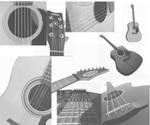 :thumb87838816: :thumb87838659:
:thumb87838816: :thumb87838659:



 :thumb88268983:
:thumb88268983:History
Before the development of the electric guitar and the use of synthetic materials, a guitar was defined as being an instrument having "a long, fretted neck, flat wooden soundboard, ribs, and a flat back, most often with incurved sides".Instruments similar to the guitar have been popular for at least 5,000 years. The six string classical guitar first appeared in Spain but was itself the product of a long and complex history of diverse influences.


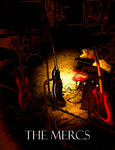 :thumb88525298:
:thumb88525298:



:thumb88828473: :thumb88828805: :thumb88828739: :thumb88828891:
Like virtually all other stringed European instruments, the guitar ultimately traces back thousands of years, via the Middle East, to a common ancient origin from instruments then known in central Asia and India. It is therefore very distantly related with contemporary instruments such as the Iranian tanbur and setar and the Indian sitar. The oldest known iconographic representation of an instrument displaying all the essential features of a guitar being played is a 3300 year old stone carving of a Hittite bard.
 :thumb88828675:
:thumb88828675:









The modern word, guitar, was adopted into English from Spanish guitarra, derived from the Latin word cithara, which in turn was derived from the earlier Greek word kithara, which perhaps derives from Persian sihtar.Sihtar itself is related to the Indian instrument, the sitar.
:thumb90550462:


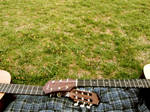
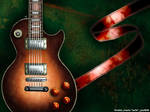 :thumb91111657:
:thumb91111657:


:thumb91691568: :thumb91691812: :thumb91996487:

The modern guitar is descended from the Roman cithara brought by the Romans to Hispania around 40 AD, and further adapted and developed with the arrival of the four-string oud, brought by the Moors after their conquest of the Iberian peninsula in the 8th century.Elsewhere in Europe, the indigenous six-string Scandinavian lut (lute), had gained in popularity in areas of Viking incursions across the continent.


 :thumb63485488:
:thumb63485488::thumb63480031:


Mature Content





Often depicted in carvings c. 800 AD, the Norse hero Gunther (also known as Gunnar), played a lute with his toes as he lay dying in a snake-pit, in the legend of Siegfried.By 1200 AD, the four string "guitar" had evolved into two types: the guitarra morisca (Moorish guitar) which had a rounded back, wide fingerboard and several soundholes, and the guitarra latina (Latin guitar) which resembled the modern guitar with one soundhole and a narrower neck.
:thumb68857481:
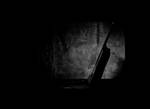 :thumb77929897:
:thumb77929897:





:thumb82996685:

 :thumb84224657:
:thumb84224657:The Spanish vihuela or "viola da mano", a guitar-like instrument of the 15th and 16th centuries is, due to its many similarities, usually considered the immediate ancestor of the modern guitar. It had lute-style tuning and a guitar-like body. Its construction had as much in common with the modern guitar as with its contemporary four-course renaissance guitar.
:thumb84310184:



 :thumb87478172: :thumb87479176:
:thumb87478172: :thumb87479176:

:thumb88940261: :thumb88940517:
 :thumb90228239:
:thumb90228239:The vihuela enjoyed only a short period of popularity as it was superseded by the guitar; the last surviving publication of music for the instrument appeared in 1576. It is not clear whether it represented a transitional form or was simply a design that combined features of the Arabic oud and the European lute. In favor of the latter view, the reshaping of the vihuela into a guitar-like form can be seen as a strategy of differentiating the European lute visually from the Moorish oud.
:thumb72119703: :thumb73501498:
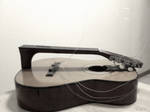







The Vinaccia family of luthiers is known for developing the mandolin, and may have built the oldest surviving six string guitar. Gaetano Vinaccia (1759 – after 1831)[8] has his signature on the label of a guitar built in Naples, Italy for six strings with the date of 1779.[9][10] This guitar has been examined and does not show tell-tale signs of modifications from a double-course guitar although fakes are known to exist of guitars and identifying labels from that period.



 :thumb89932496:
:thumb89932496:






Modern dimensions of the classical instrument were established by Antonio Torres Jurado (1817-1892), working in Seville in the 1850s. Torres and Louis Panormo of London (active 1820s-1840s) were both responsible for demonstrating the superiority of fan strutting over transverse table bracing.The electric guitar was patented by George Beauchamp in 1936. Beauchamp co-founded Rickenbacher which used the horseshoe-magnet pickup. However, it was Danelectro that first produced electric guitars for the wider public.
:thumb90077735: :thumb90231462: :thumb90231609: :thumb90279098:
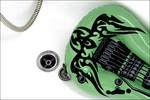



 :thumb91473187: :thumb92058242:
:thumb91473187: :thumb92058242:

Acoustic guitars
An acoustic guitar is one not dependent on an external device to be heard but uses a soundboard which is a wooden piece mounted on the front of the guitar's body. The acoustic guitar is quieter than other instruments commonly found in bands and orchestras so when playing within such groups it is often externally amplified. Many acoustic guitars available today feature a variety of pickups which enable the player to amplify and modify the raw guitar sound.





 :thumb90397077:
:thumb90397077:

:thumb91612015:

 :thumb58479042:
:thumb58479042:There are several notable subcategories within the acoustic guitar group: classical and flamenco guitars; steel string guitars, which include the flat top or "folk" guitar; twelve string guitars and the arch top guitar. The acoustic guitar group also includes unamplified guitars designed to play in different registers such as the acoustic bass guitar which has a similar tuning to that of the electric bass guitar.


 :thumb68592028:
:thumb68592028: :thumb63640607:
:thumb63640607:



 :thumb82819662:
:thumb82819662:

Renaissance and Baroque guitars
These are the gracile ancestors of the modern classical guitar. They are substantially smaller and more delicate than the classical guitar, and generate a much quieter sound. The strings are paired in courses as in a modern 12 string guitar, but they only have four or five courses of strings rather than six. They were more often used as rhythm instruments in ensembles than as solo instruments, and can often be seen in that role in early music performances. (Gaspar Sanz' Instrucción de Música sobre la Guitarra Española of 1674 constitutes the majority of the surviving solo corpus for the era.) Renaissance and Baroque guitars are easily distinguished because the Renaissance guitar is very plain and the Baroque guitar is very ornate, with ivory or wood inlays all over the neck and body, and a paper-cutout inverted "wedding cake" inside the hole.

 :thumb84896571:
:thumb84896571:

:thumb85285486:
 :thumb87569323: :thumb87569560:
:thumb87569323: :thumb87569560:

 :thumb90930699:
:thumb90930699:Classical guitars
These are typically strung with nylon strings, played in a seated position and are used to play a diversity of musical styles including classical music. The classical guitar is designed to allow for the execution of solo polyphonic arrangements of music in much the same manner as the pianoforte can. This is the major point of difference in design intent between the classical instrument and other designs of guitar. Flamenco guitars are very similar in construction, but are associated with a more percussive tone. In Mexico, the popular mariachi band includes a range of guitars, from the tiny requinto to the guitarron, a guitar larger than a cello, which is tuned in the bass register. In Colombia, the traditional quartet includes a range of instruments too, from the small bandola (sometimes known as the Deleuze-Guattari, for use when traveling or in confined rooms or spaces), to the slightly larger tiple, to the full sized classical guitar.
:thumb89038143: :thumb89038204:




 :thumb91992053:
:thumb91992053:



The requinto also appears in other Latin-American countries as a complementary member of the guitar family, with its smaller size and scale, permitting more projection for the playing of single-lined melodies. Modern dimensions of the classical instrument were established by Antonio Torres Jurado (1817-1892). Classical guitars are sometimes referred to as classic guitars. In recent years, the series of guitars used by the Niibori Guitar orchestra have gained some currency, namely:

 :thumb92055054:
:thumb92055054:

:thumb92065396: :thumb92069269: :thumb92070915: :thumb92080084:
:thumb92083545:


Mature Content

* Sopranino guitar (an octave and a fifth higher than normal); sometimes known as the piccolo guitar
* Soprano guitar (an octave higher than normal)
* Alto guitar (a 5th higher than normal)
* Prime (ordinary classical) guitar
* Niibori bass guitar (a 4th lower than normal); Niibori simply calls this the "bass guitar", but this assigns a different meaning to the term than other parts of the community use, as his is only a 4th lower, and has 6 strings
* Contrabass guitar (an octave lower than normal)
:thumb91631795: :thumb91632490:
 me by h9351
me by h9351Gitar by LimpidD Green hearts and Guitar by LimpidD Do-Re-Mi by LimpidD :thumb85573084:
My Guitar by V-elo-X Gitarre Nr.II by PrincessFrog Gitarre by irtschik gitarre by ArtOriginal
The modern Ten-string guitar
The Modern/Yepes 10-string guitar (a classical guitar) adds four strings (resonators) tuned in such a way that they (along with the other three bass strings) can resonate in unison with any of the 12 chromatic notes that can occur on the higher strings; the idea behind this being an attempt at enhancing and balancing sonority.
Peter Blake Fender Guitar by MarinaWalker :thumb26631896: Guitar angles by j-e-t-h-r-o Gitaristimsi by ahmetp
gitar robo by cnkertn ........Gitar..... by narkoz gitar tua by gembel Gitar I by allgy
:thumb86685883: Guitar by xMorbid-Angelx guitar by desjaak Guitar by XClimax
Electric guitars
Main article: Electric guitar
Electric guitars can have solid, semi-hollow, or hollow bodies, and produce little sound without amplification. Electromagnetic pickups convert the vibration of the steel strings into electrical signals which are fed to an amplifier through a cable or radio transmitter. The sound is frequently modified by other electronic devices or the natural distortion of valves (vacuum tubes) in the amplifier. There are two main types of pickup, single and double coil (or humbucker), each of which can be passive or active. The electric guitar is used extensively in jazz, blues, and rock and roll, and was commercialized by Gibson in collaboration with Les Paul, and independently by Leo Fender of Fender Music. The lower fretboard action (the height of the strings from the fingerboard) and its electrical amplification lend the electric guitar to some techniques which are less frequently used on acoustic guitars. These include tapping, extensive use of legato through pull-offs and hammer-ons (also known as slurs), pinch harmonics, volume swells, and use of a tremolo arm or effects pedals.
Underwater Guitar by devilp3nguin ghosts in my guitar by schelly :thumb45524406: guitar and me by Damned-Tear
:thumb57943198: Guitar -charcoal- by Mimiluvbug Guitar by eugenebuzuk Guitar Love by SinfulEyes
Guitar by starfox25 :thumb18537241: :thumb15326416: winged guitar by iceSkar
Seven-strings were popularized in the 1980s and 1990s in part due to the release of the Ibanez Universe guitar, endorsed by Steve Vai. Other artists go a step further, by using an 8 string guitar with two extra low strings. Although the most common 7-string has a low B string, Roger McGuinn (of The Byrds and Rickenbacker) uses an octave G string paired with the regular G string as on a 12 string guitar, allowing him to incorporate chiming 12 string elements in standard 6 string playing.
The electric bass guitar is similar in tuning to the traditional double bass viol. Hybrids of acoustic and electric guitars are also common. There are also more exotic varieties, such as guitars with two, three,[12] or rarely four necks, all manner of alternate string arrangements, fretless fingerboards (used almost exclusively on bass guitars, meant to emulate the sound of a stand-up bass), 5.1 surround guitar, and such.
Some electric guitar and electric bass guitar models feature Piezoelectric pickups, which function as transducers to provide a sound closer to that of an acoustic guitar with the flip of a switch or knob, rather than switching guitars.
Guitar by IdaMO The guitar by zajdausacek GUITAR by Thijser my guitar by lemontree69
My Guitar by Junk-Messiah Guitar by shockhorror000 :thumb35329735: :thumb39396749:
:thumb17762121: guitar by PurplePolkaDot :thumb11081888: :thumb28805498:
General
Guitars can be constructed to meet the demands of both left and right-handed players. Traditionally the dominant hand is assigned the task of plucking or strumming the strings. For the majority of people this entails using the right hand. This is because musical expression (dynamics, tonal expression and colour etc) is largely determined by the plucking hand, while the fretting hand is assigned the lesser mechanical task of depressing and gripping the strings. This is similar to the convention of the violin family of instruments where the right hand controls the bow. A minority, however, believe that left-handed people should learn to play guitars strung in the manner used by right-handed people, simply to standardise the instrument.
:thumb38934993: tune..3 by duez cold tune 2 by duez cold tune 1 by duez
emily the strange by esrapk guitar by mehmetakifturgut perfect guitar... by grimdogger La Guitarra by magoseitor
:thumb46078531: Let The Music Warp You by Shaun8848 Petrucci's guitar scene WIP by ToastMan85 :thumb51145164:
Main article: Headstock
The headstock is located at the end of the guitar neck furthest from the body. It is fitted with machine heads that adjust the tension of the strings, which in turn affects the pitch. Traditional tuner layout is "3+3" in which each side of the headstock has three tuners (such as on Gibson Les Pauls). In this layout, the headstocks are commonly symmetrical. Many guitars feature other layouts as well, including six-in-line (featured on Fender Stratocasters) tuners or even "4+2" (Ernie Ball Music Man). However, some guitars (such as Steinbergers) do not have headstocks at all, in which case the tuning machines are located elsewhere, either on the body or the bridge.
eTar Sport by throttledan eTar eCoustic Classic 2 by throttledan 3d Guitar by pradyuman Les Paul by jean3d
Gasolined Guitar by ReiForge Guitar from flowers by SilverFrog666 Beatles Guitar 3 by alzz107 Beatles Guitar 2 by alzz107
Gibson X-plorer Cake by Cup-Cake-Lover Guitar by xb52x :thumb63936476: guitar3 by xb52x
Nut
Main article: Nut (instrumental)
The nut is a small strip of bone, plastic, brass, corian, graphite, stainless steel, or other medium-hard material, at the joint where the headstock meets the fretboard. Its grooves guide the strings onto the fretboard, giving consistent lateral string placement. It is one of the endpoints of the strings' vibrating length. It must be accurately cut, or it can contribute to tuning problems due to string slippage, and/or string buzz.
guitar4 by xb52x guitar 2 by xb52x Guitar by yourvirus Random w.i.p 3D guitar by ethioper
Guitar w.i.p more view's by ethioper Star Guitar1 by InitialK Star Guitar2 by InitialK Star Guitar3 by InitialK
Ibanez RG Guitar by Trickdacy Ibanez RG Guitar 2 by Trickdacy Ibanez Guitar 3 by Trickdacy Whole View by Trickdacy
Fretboard
Main article: Fingerboard
Also called the fingerboard, the fretboard is a piece of wood embedded with metal frets that comprises the top of the neck. It is flat on classical guitars and slightly curved crosswise on acoustic and electric guitars. The curvature of the fretboard is measured by the fretboard radius, which is the radius of a hypothetical circle of which the fretboard's surface constitutes a segment. The smaller the fretboard radius, the more noticeably curved the fretboard is. Most modern guitars feature a 12" neck radius, while older guitars from the '60's and '70's usually feature a 6" – 8" neck radius. Pinching a string against the fretboard effectively shortens the vibrating length of the string, producing a higher pitch. Fretboards are most commonly made of rosewood, ebony, maple, and sometimes manufactured or composite materials such as HPL or resin. See below on section 'Neck" for the importance of the length of the fretboard in connection to other dimensions of the guitar.
Star Guitar4 by InitialK guitar coolie by dareme907 iFender by KREAK :thumb70994285:
:thumb70509934: Broken Hearted Guitar Blues by retrohendrix GUITAR progress 03 by Cowboy-Fresh Gibson Les Paul Custom by AfroAfroguy
b1 by one-man-tragedy GUITAR 3d close up by Cowboy-Fresh Jackson RR - Views by guitar-art-asylum :thumb73159921:
Frets
Main article: Fret
Frets are metal strips (usually nickel alloy or stainless steel) embedded along the fretboard and located at exact points that divide the scale length in accordance with a specific mathematical formula. Pressing a string against a fret determines the strings' vibrating length and therefore its resultant pitch. The pitch of each consecutive fret is defined at a half-step interval on the chromatic scale. Standard classical guitars have 19 frets and electric guitars between 21 to 24 frets.
Frets are laid out to a mathematical ratio that results in equal tempered division of the octave. The ratio of the spacing of two consecutive frets is the twelfth root of two sqrt[12]{2}, whose numeric value is about 1.059463. The twelfth fret divides the scale length in two exact halves and the 24th fret position divides the scale length in half yet again. Every twelve frets represents one octave. In practice, luthiers determine fret positions using the constant 17.817, which is derived from the twelfth root of two. The scale length divided by this value yields the distance from the nut to the first fret. That distance is subtracted from the scale length and the result is divided in two sections by the constant to yield the distance from the first fret to the second fret. Positions for the remainder of the frets are calculated in like manner.
Guitar by joao15 Samick Ultramatic by lucanio My clay guitar by TreCooL69 Devil May Cry 3: Nevan by malmida
3D Guitar by princerajput Red Guitar by GypsyH Guitar head stock by Orphene :thumb76965695:
:thumb79249203: :thumb81170354: :thumb80095202: :thumb81799596:
There are several different fret gauges, which can be fitted according to player preference. Among these are "jumbo" frets, which have much thicker gauge, allowing for use of a slight vibrato technique from pushing the string down harder and softer. "Scalloped" fretboards, where the wood of the fretboard itself is "scooped out" between the frets allows a dramatic vibrato effect. Fine frets, much flatter, allow a very low string-action but require other conditions such as curvature of the neck to be well maintained in order to prevent buzz. Frets worn down from heavy use can be replaced or, to a certain extent, re-shaped as required.
:thumb82575372: :thumb84969298: :thumb87416487: :thumb88573084:
:thumb88291688: :thumb88291500: :thumb90314760: :thumb90314890:
:thumb89432350: :thumb58689027: :thumb60864834: :thumb78502183:
Truss rod
Main article: Truss rod
The truss rod is a metal rod that runs along the inside of the neck. It is used to correct changes to the neck's curvature caused by the neck timbers aging, changes in humidity or to compensate for changes in the tension of strings. The tension of the rod and neck assembly is adjusted by a hex nut or an allen-key bolt on the rod, usually located either at the headstock, sometimes under a cover, or just inside the body of the guitar underneath the fretboard and accessible through the sound hole. Some truss rods can only be accessed by removing the neck. The truss rod counteracts the immense amount of tension the strings place on the neck, bringing the neck back to a straighter position. Turning the truss rod clockwise will tighten it, counteracting the tension of the strings and straightening the neck or creating a backward bow. Turning the truss rod counter-clockwise will loosen it, allowing string tension to act on the neck and creating a forward bow.
:thumb88530967: :thumb2768480: :thumb2054995: :thumb5368451:
:thumb7726395: :thumb7906868: :thumb7907037: :thumb7907492:
:thumb14022905: :thumb15472689: :thumb15511365: :thumb15655498:
Adjusting the truss rod affects the intonation of a guitar as well as the height of the strings from the fingerboard, called the action. Some truss rod systems, called "double action" truss systems, tighten both ways, allowing the neck to be pushed both forward and backward (standard truss rods can only be released to a point beyond which the neck will no longer be compressed and pulled backward). Classical guitars do not require truss rods as their nylon strings exert a lower tensile force with lesser potential to cause structural problems.
:thumb16647952: :thumb16646761: :thumb17433024: :thumb18018498:
:thumb19381401: :thumb20166578: :thumb27926656: :thumb28231066:
:thumb29222536: :thumb29311959: :thumb30932689: :thumb30924915:
Inlays
Main article: Inlay (guitar)
Inlays are visual elements set into the exterior surface of a guitar. The typical locations for inlay are on the fretboard, headstock, and on acoustic guitars around the soundhole, known as the rosette. Inlays range from simple plastic dots on the fretboard to intricate works of art covering the entire exterior surface of a guitar (front and back). Some guitar players have used LEDs in the fretboard to produce a unique lighting effects onstage.
:thumb33931649: :thumb36139030: :thumb37068103: :thumb37423601:
:thumb38309357: :thumb48138783: :thumb48964838: :thumb49069973:
:thumb49543737: :thumb49727780: :thumb49896714: :thumb50038087:
Fretboard inlays are most commonly shaped like dots, diamond shapes, parallelograms, or large blocks in between the frets. Dots are usually inlaid into the upper edge of the fretboard in the same positions, small enough to be visible only to the player. Some older or high-end instruments have inlays made of mother of pearl, abalone, ivory, coloured wood or other exotic materials and designs. Simpler inlays are often made of plastic or painted. High-end classical guitars seldom have fretboard inlays as a well trained player is expected to know his or her way around the instrument.
:thumb91798698: :thumb91824298: :thumb91810759: :thumb91844068:
:thumb91842230: :thumb91884915: :thumb91880730: :thumb91915686:
:thumb91921898: :thumb92040353: :thumb92044937: :thumb92055054:
In addition to fretboard inlay, the headstock and soundhole surround are also frequently inlaid. The manufacturer's logo or a small design is often inlaid into the headstock. Rosette designs vary from simple concentric circles to delicate fretwork mimicking the historic rosette of lutes. Bindings that edge the finger and sound boards are sometimes inlaid. Some instruments have a filler strip running down the length and behind the neck, used for strength and/or to fill the cavity through which the trussrod was installed in the neck.
:thumb91276436: :thumb91396438: :thumb91518669: :thumb91573177:
:thumb91619056: :thumb91639193: :thumb91635837: :thumb91659500:
:thumb91657401: :thumb91658661: :thumb91751336: :thumb91798177:
Elaborate inlays are a decorative feature of many limited edition, high-end and custom-made guitars. Guitar manufacturers often release such guitars to celebrate significant or historic milestones.
:thumb52194597: :thumb51822293: :thumb52689111: :thumb52318412:
:thumb57425398: :thumb57895686: :thumb59593389: :thumb61279223:
:thumb61658792: :thumb63124846: :thumb64514366: :thumb66096117:
Neck
Main article: Neck (music)
A guitar's frets, fretboard, tuners, headstock, and truss rod, all attached to a long wooden extension, collectively constitute its neck. The wood used to make the fretboard will usually differ from the wood in the rest of the neck. The bending stress on the neck is considerable, particularly when heavier gauge strings are used (see Tuning), and the ability of the neck to resist bending (see Truss rod) is important to the guitar's ability to hold a constant pitch during tuning or when strings are fretted. The rigidity of the neck with respect to the body of the guitar is one determinant of a good instrument versus a poor one. The shape of the neck can also vary, from a gentle "C" curve to a more pronounced "V" curve.
:thumb66406444: :thumb73393073: :thumb73462397: :thumb75684264:
:thumb77360855: :thumb79825507: :thumb81641551: :thumb81583730:
:thumb82496829: :thumb82502926: :thumb52340759: :thumb78415464:
There are many different types of neck profiles available, giving the guitarist many options. Some aspects to consider in a guitar neck may be the overall width of the fingerboard, scale (distance between the frets), the neck wood, the type of neck construction (for example, the neck may be glued in or bolted on), and the shape (profile) of the back of the neck. Other type of material used to make guitar necks are graphite (Steinberger guitars), aluminium (Kramer Guitars, Travis Bean and Veleno guitars), or carbon fiber (Modulus Guitars and ThreeGuitars).
:thumb9669706: :thumb40751939: :thumb49098593: :thumb43709840:
:thumb45766260: :thumb45185974: :thumb51770251: :thumb55999724:
:thumb57864647: :thumb58663672: :thumb59302853: :thumb65183799:
Electronics
On guitars that have them, these components and the wires that connect them allow the player to control some aspects of the sound like volume or tone. These at their simplest consist of passive components such as potentiometers and capacitors, but may also include specialized integrated circuits or other active components requiring batteries for power, for preamplification and signal processing, or even for assistance in tuning. In many cases the electronics have some sort of shielding to prevent pickup of external interference and noise.
:thumb61658028: :thumb62338907: :thumb71771076: :thumb84516243:
:thumb89405212: :thumb50729997: :thumb55303244: :thumb90912633:
:thumb91036934: :thumb91732027: :thumb91756332: :thumb91952934:
:thumb91108179: :thumb91068740: :thumb91173106: :thumb91509283:
So then Hope you enjoy this
Loving you
:heart: Love This Guys :heart:
:heart:!Ilayda-Arts (https://www.deviantart.com/ilayda-arts):heart:
:thumb94611749::thumb94390382::thumb95226862:
:heart::iconBraq::heart:
:thumb61259992::thumb60520238::thumb51649641:
:heart::iconkupaas::heart:
:thumb96930237::thumb96575661::thumb98100291:
:heart::iconG2K2007::heart:
:thumb95820900::thumb96484749::thumb97391152:
:heart::iconvirtud::heart:
:thumb89555622::thumb93305711::thumb93084686:
:heart::iconannythings::heart:
:thumb97393704::thumb87859327::thumb90909929:
:heart::iconladyfromeast::heart:
:thumb95691094::thumb95978100::thumb94634293:
:heart::iconphotography-cc::heart:
:thumb92709262::thumb95406755::thumb9208008
The Love Deviants
So i searched and found So many great Love Works
:heart:
:thumb63358023:
:thumb77333728: :thumb90899492: :thumb51509478: :thumb94136490:
:thumb36152177: :thumb57731003: :thumb36347279: :thumb45142811:
:thumb74535237: :thumb64166720: :thumb59063835: :thumb97701101:
:thumb97701572: :thumb97701741: :thumb25312758: :thumb51523964:
Love represents a range of emotions and experiences related to the senses of affection and sexual attraction.[1] The word love can refer to a variety of different feelings, states, and attitudes, ranging from generic pleasure to intense interpersonal attraction. This diversity of meanings, combined with the
So so so I have a Facebook Account Yes
Kira Schwabing
Wait for you there
xoxoxoxo
:kiss:
:heart:
I am in Holiday
© 2008 - 2024 AngeL-FaLL
Comments293
Join the community to add your comment. Already a deviant? Log In
Thanks for putting this all together. Guitar is my life!
Was there a pic of a Parker guitar somewhere and I missed it? There so unique in appearance and that's what I own.
Was there a pic of a Parker guitar somewhere and I missed it? There so unique in appearance and that's what I own.
